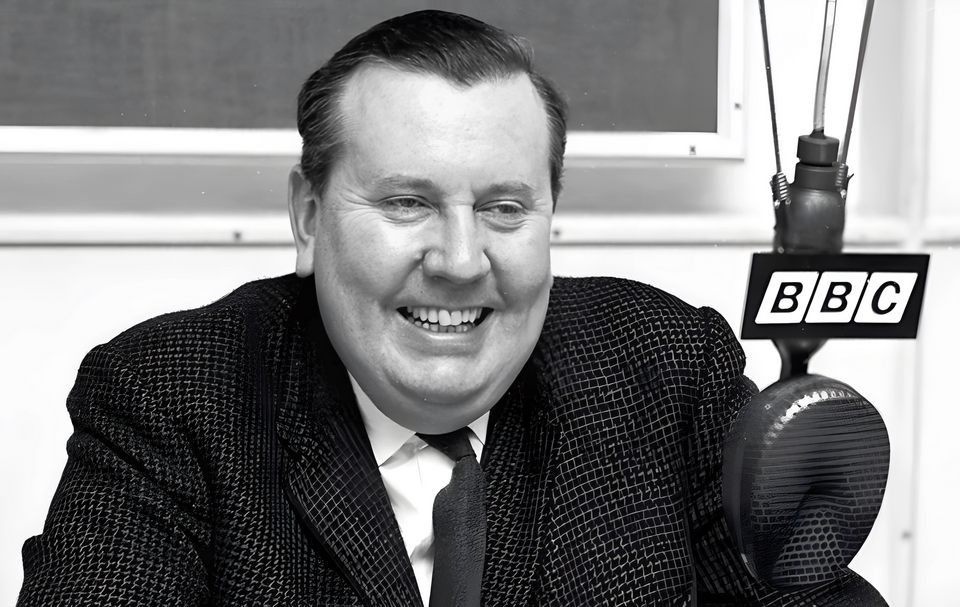
This morning, I was pottering around in the kitchen preparing some dog food, when suddenly, for no obvious reason the folk song known as The Eriskay Love Lilt drifted into my mind. It will probably stay there for days to come, as these ear-worms tend to do. It was one of my mother’s favourite folk songs and it became briefly popular when it was recorded by The Seekers in 1964, though in a somewhat sanitized version. Eriskay, in case you had forgotten (or possibly never knew), is a tiny island between the Scottish islands of South Uist and Barra.
They are part of the Outer Hebrides (HEB-rid-eez), a group of islands which stand in the Atlantic Ocean off the rugged north-west coast of Scotland. Eriskay’s claim to fame is that in August 1745, Prince Charles Edward Stuart landed there. Better known as Bonnie Prince Charlie, he’d travelled secretly to Britain to try and regain the British throne for his father, James Francis Edward Stuart. The attempt, sometimes known as The Jacobite Rebellion, was spectacularly unsuccessful, but gave rise to several folk songs, notably The Skye Boat Song, which directly refers to the disastrous Battle of Culloden.

The Eriskay Love Lilt may have remained completely forgotten, had it not been for the splendid and intrepid Marjory Kennedy-Fraser, who was a Scottish singer, composer and folklorist. In 1905, she visited Eriskay and recorded a few Hebridean folk songs by hand, simply by writing them down. While she was there, she decided to do the job properly and during the following years, trekked the islands to record folk songs on her Edison Bell wax cylinder phonograph recorder, state-of-the-art technology at the time.

Back home in Glasgow, she transcribed the songs into music notation and arranged many of them for voice and keyboard. They were published, with English translations of the original Scots Gaelic during the early years of the twentieth century and included The Eriskay Love Lilt. Marjory Kennedy-Fraser also travelled the world, giving vocal recitals of Scottish songs.
This would have no doubt pleased Saint Andrew, the patron saint of Scotland and who lived around the beginning of the first century AD. He was the younger brother of Saint Peter and lived in Galilee which is now part of modern-day northern Israel and southern Lebanon. Of course, they weren’t saints at the time; just young fishermen who spent their early years trawling the Sea of Galilee. Then one day, they just happened to meet you-know-who, and their lives were never the same again. St Andrew has been the patron saint of Scotland since the ninth century and is also the patron saint of Greece, Romania, Russia, Poland and the Ukraine. St Andrew’s Day falls on 30th November and it’s marked with a celebration of all things Scottish including music, dance and food and of course, one of Scotland’s most famous exports – Scottish whisky.
Winston Churchill once said, “Of all the small nations of this earth, perhaps only the ancient Greeks surpass the Scots in their contribution to mankind.” Scotland, or to be more accurate, some notable men and women of Scotland have given the world much more than Scottish whisky and the Scottish bagpipes. The refrigerator was invented by Scotsman William Cullen in 1755. James Watt, the Scottish inventor and engineer was one of the pioneers of the industrial revolution and his improvements on the steam engine in 1776 changed industry. The unit of power known as the “watt” was named after him. The telephone was invented by the Scots-born American inventor Alexander Graham Bell; John Logie Baird invented the television in 1926 and the MRI scanner was developed by a team at the University of Aberdeen. In 1966, the Scottish James Goodfellow, invented the first automated teller machine (ATM) and the pin number system.

James Clerk Maxwell invented colour photography in 1855, but more importantly showed that electricity, magnetism and light were different manifestations of the same phenomenon. He is now recognised as “the father of modern physics”. Scottish physician, Alexander Wood, developed the first hypodermic needle in 1853 and Sir Alexander Fleming discovered the antibiotic properties of penicillin in 1929. The surgeon Joseph Lister devised strategies to increase the chances of patient survival after surgery. And I could go on and mention names such as Thomas Telford, Robert Burns, Robert Louis Stevenson, Andrew Carnegie, James Boswell, Sir Walter Scott and many others. But I think I’ve made my point.

I wish I could have given you a similar list of eminent Scottish composers who are household names today, but there aren’t any. Those whose music is still performed are barely known outside musical circles. Hamish MacCunn, achieved early success with his orchestral piece The Land of the Mountain and the Flood, completed in 1887 when he was only nineteen. Then there’s the 20th century composer Thea Musgrave whose music is rarely heard despite her vast catalogue of compositions. Robin Orr was another 20th century Scottish composer whose music achieved some popularity in the 1960s and 70s but has since faded from the repertoire. And that, I am sorry to say, is about it.
Perhaps as a compromise, Scotland has also given the world a wealth of folk songs and the country has served as inspiration for several composers, notably Felix Mendelssohn who visited Scotland in 1829 and subsequently wrote his Hebrides Overture and the Scottish Symphony. On his last visit to England in 1847, he conducted this work in front of an audience that included Queen Victoria and Prince Albert. Frédéric Chopin also visited Scotland. Max Bruch’s Scottish Fantasy for violin and orchestra is an all-time favourite in concert halls.
Malcolm Arnold (1921-2006): Four Scottish Dances Op. 59. Tampa Bay Symphony cond. Mark Sforzini (Duration: 10:18; Video: 1080p HD)
As a child, I recall my Scottish grandmother listening to records of a dance band led by the somewhat dour Scots accordionist, Jimmy Shand. The band played dance medleys of relentlessly jollity and she’d listen to them for ages, tapping her foot with lady-like gentility. But I don’t think this work by Malcolm Arnold would have appealed to her somewhat traditional taste. It was composed in 1957 for the BBC Light Music Festival. You can’t mistake the Scottish influence and if Arnold’s music is new to you, this entertaining suite is a good place to start.
It was written two years after the exuberant Scottish concert overture Tam o’ Shanter with which it has much in common, at least in terms of vitality and orchestral colour. Malcolm Arnold composed numerous works including nine symphonies, many concertos, chamber music, choral music and works for brass band and wind band. Unlike many 20th century composers, his harmonic style is mostly tonal, but he had a gift for writing melody and developed brilliant orchestration skills. As well as two operas and ballet music, Arnold also wrote the scores for more than a hundred films including the 1957 epic war film directed by David Lean, The Bridge on the River Kwai.

The first movement echoes the dance known as the Strathspey which has the unmistakable sounds of groaning bagpipes and the characteristic abrupt rhythm known as “the Scottish snap”. It’s a wild-sounding piece but not without the typical Arnold touches of humour. Ideas from Arnold’s film music influence the two middle movements and they’re full of attractive melodies. The third one contains some remarkably beautiful music and sounds vaguely like a Hollywood take on a Hebridean folksong. Even so, the sound is magical and really captures the sense of the Scottish landscape. Droning bagpipes return in the swirling last movement, which turns into a wild and dissonant, turbulent dance.
Ronald Binge (1910-1979): A Scottish Rhapsody. WDR Funkhausorchester cond. Rumon Gamba (Duration: 06:55; Video: 1080p HD)
Ronald Binge’s musical evocation of Scotland is a good deal more sedate than Malcolm Arnold’s boisterous offering. Binge was one of the most respected light music composers of his generation and for a time was the chief arranger for the Mantovani Orchestra. Binge’s best-known composition was probably Elizabethan Serenade but he also dabbled in more conventional forms and his attractive Concerto for Alto Saxophone is now a standard work. His most ambitious composition is the rarely-heard Symphony in C which dates from the 1970s.

The delightful Scottish Rhapsody was written in 1953 for the Mantovani Orchestra and was included in many of the orchestra’s concert performances in Europe and America. Much of the musical material is the composer’s own but you might recognize two or three genuine Scottish folk tunes. Binge certainly had the gift of writing music that evokes the misty countryside and the atmosphere of the Scottish glens. There are some magic moments too – just listen to the start of the lyrical section at 03:22 when a sumptuous, glorious melody appears in the strings.
Incidentally, it was Ronald Binge who invented the “cascading strings” effect, achieved by cleverly dividing the violins so that the parts overlap each other, giving the acoustic effect of music being played in an enormous cathedral. In 1951, his arrangement of the sentimental melody Charmaine used his cascading strings effect to full effect and launched Mantovani and his Orchestra to international stardom. And here’s an interesting connection. From 1961 to 1971, the leader of the orchestra was the distinguished Scottish violinist David McCallum, who in previous years had led the Scottish National Orchestra, the Royal Philharmonic Orchestra and the London Philharmonic Orchestra. His name might ring a bell because his son, also named David McCallum became the well-known actor who famously played the secret agent Illya Kuryakin in the 1960s American television series The Man from U.N.C.L.E. This prompted Mantovani to sometimes introduce the leader to audiences with the quip, “We can afford to hire the father but not the son!”










